The MEG II experiment, based at the Paul Scherrer Institut in Switzerland, was designed to search for the Standard Model suppressed decay of a positive muon to a positron and a photon. The combination of the MEG II data with the full data set of the MEG experiment established the most stringent limit to date. The MEG II detector can be exploited to investigate the existence and to study the...
Recent years have seen much activity in searches for dark-sector messenger particles in the 10–100 MeV mass range, especially in view of a potential new light boson conjectured by the ATOMKI Collaboration, X17. Under the assumption that the messenger particle has definite parity and either zero or unit spin, quite stringent bounds already exist on its coupling to electrons and protons. Equally...
The CEBAF large acceptance spectrometer in experimental Hall B at Jefferson Lab, CLAS12, is designed to perform experiments with polarized and unpolarized targets using electron beam ranging from 2 GeV to 11 GeV with operating luminosity of up to L = 10^35 cm−2 sec−1. The CLAS12 physics program covers a broad range of nuclear physics topics, with a central focus on the three-dimensional...
The Big Bang nucleosynthesis (BBN) theory explains the formation of the universe's lightest elements hydrogen, helium, and lithium within the first 10 seconds to 20 minutes after the event. In contrast, stellar burning is responsible for producing all naturally occurring elements, aside from these primordial ones, occurring much later and continuing in stars today. When interstellar gas...
- Introduction In nuclear astrophysics, neutron capture reactions in s-and r-processes of nucleosynthesis play a decisive role in the understanding of origin of elements heavier than iron. The description of these neutron capture reactions relies on the statistical Hauser-Feshbach theory to estimate the reaction cross-section. The model requires two indispensable input quantities , nuclear...

